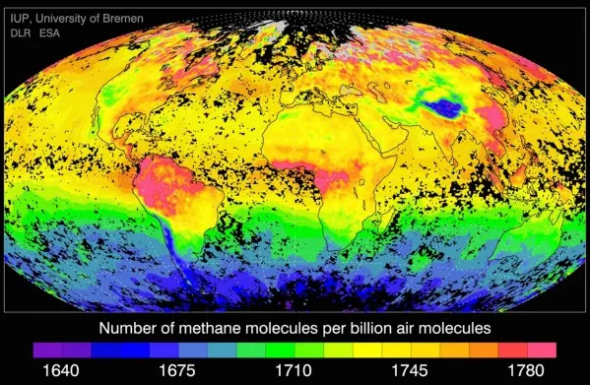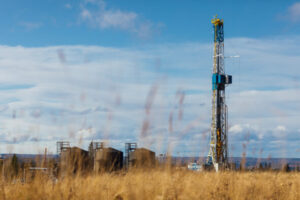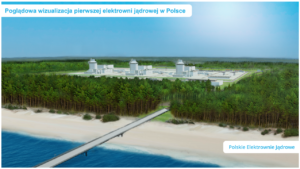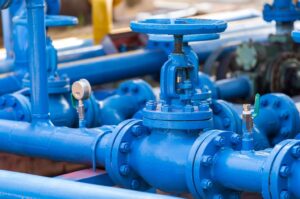Today the European Commission will present its methane strategy. Lobbyists are already working to use the ensuing regulations to promote gas from Russia and block LNG from the U.S. – writes Wojciech Jakóbik, editor-in-chief at BiznesAlert.pl.
Gas is next in line after coal
History never ends. The fight for diversification, which on the surface will be done once the Baltic Pipe from Norway via Denmark to Poland is finished, will in fact go on. The new battleground is the methane strategy that is to be revealed on the 14th October. The European Union is scraping coal from the energy mix. Its new policy may also eliminate gas, which is a move feared by the gas sector in Poland and the world over. According to EurActiv.com, Brussels wants to start with reporting on emissions. The European Union is responsible for only five percent of the global emissions, so it will seek cooperation with foreign partners. The scale of reporting will be determined via inter-institutional consultations in Europe. The EC wants to create an independent, international mechanism for examining methane emissions in the energy sector. It wants to track the biggest global polluters to detect leaks and search for ways to prevent them.
The new regulations on combating methane emissions are causing concerns in the oil and gas sector, which does not want to bear new climate policy costs. One of the considered solutions, which did not appear in the draft revealed by EurActiv.com, is an emissions trading system akin to the one for CO2. Its introduction would significantly increase the operation costs of the hydrocarbon sector, because it would force it to limit emissions. However, it would contribute to reducing pollution by greenhouse gases, mostly methane.
It turns out that some research is already targeting the shale revolution in the U.S. Americans lowered CO2 emissions by phasing out coal generation. Between 2000 and 2018 the emissions dropped by 23 percent in general and by 34 percent in the energy sector. This was possible thanks to the development of shale gas extraction, which provides fuel to the growing number of gas-powered power stations. According to researched published by AGU Advances in September 2020, the reduction in CO2 emissions was cancelled out by the increase in methane emissions caused by leaks, which at the end of the day had an adverse impact on the environment. The only way to achieve the expected environmental impact and fulfill the Paris Climate Agreement is to reduce the usage of gas power plants and to decomission them ahead of schedule. However, it is worth reminding that the U.S. withdrew from the Paris deal. The scientists call for limiting the usage of gas power plants and shutting them down in a shot timeline. This puts wind in the sails of the supporters of an accelerated energy transition in Europe, and is a threat to Poland, which wants to largely base its transition on power and heat generation fuelled with gas. The current draft of Poland’s 2040 Energy Strategy says that in 2030 gas participation in the energy mix would reach between 17 and 33 percent. That is when it will become possible to transport the so-called decarbonized gases, and Poland’s gas transmission network will have to make available 10 percent of its capacity to this end. The gases, mostly hydrogen and biogas, together with nuclear power should lead to the expected reduction in emissions. However, the new power and heat plants that are planned in Poland (gas turbines in Warsaw’s cogeneration plants, Dolna Odra power plant, Ostrołęka’s new gas-powered unit, etc.) may come under fire if the European Union starts a radical war on methane leaks. This seems even more probable if, for instance, an emission trading system for methane is established. This idea is being seriously considered by the EC.
The fight over the methane strategy may take many different forms, depending on the final draft of the European regulations, over which the lobbyists will soon start fighting. Some argue that the biggest methane leaks occur during the production of LNG in the U.S. for export purposes, while Russia’s deposits produce… the least emissions, such as the Bowanenkowo site, which is the source of gas for the contentious Nord Stream 2 pipeline. The fact is that the leaks are evenly spread across all hydrocarbon extraction sites across the world, but it is in the West where standards are in place to successfully regulate the oil and gas sector, guaranteeing the best environmental results. It would be a lot harder to combat methane emissions in Russia, which disregards environmental protection if it stands in the way to achieving its energy plans. Reducing the area of the Kurgalsky Reserve to build the Russian section of the Nord Stream 2 is a good example here. Gazprom is already trying to convince the EC that it is fighting against methane emissions better than the U.S. and EU, by measuring and taxing this problem, conducting research with helicopters and taking infrared pictures. Russians claim that according to KPMG methane leaks were at 0.02 percent of the extracted gas volume, 0.03 percent of transported gas and 0.03 percent of stored gas in 2019. The company’s claims can be better heard in capital cities that are interested in an energy transition with the participation of gas from Russia, such as Germany, which is to import gas (perhaps hydrogen as well) via the Nord Stream 2 pipeline. According to its designers the pipe should last 50 years, which is 20 years after the EU reaches its postulated climate neutrality goal in 2050, but provided it will be commissioned in 2020, which is doubtful.
Americans were considering methane leaks already in 2014 when president Obama published a strategy on reducing methane emissions, where he ordered the Environmental Protection Agency (EPA) to prepare research on the sources of leaks in America. Separate research was published in the prestigious Science magazine and said that the scale of emissions in the U.S. was higher by 60 percent (about 13 m tons a year) than the EPA estimates. Projects such as Sabine Pass LNG, from which Poland’s PGNiG, as well as others, buy gas are reportedly impacted by a plague of leaks, with which the Trump administration doesn’t want to deal. It has been suggested that the methane leaks in the America may, apart from harming the environment, threaten security. This argumentation is dangerously reminiscent of the ludicrous warnings that if the LNG terminal in Świnoujście unsealed, the impact would be comparable to a nuclear bomb blast.
Poland needs to act quick
In the future, the battle against methane emissions may be used by lobbyists to hamper the the diversification of gas supply to Europe and transatlantic cooperation in this regard. It would be wise to prepare standards for handling methane emissions as quickly as possible, and to take protective measures to continue the energy transition of Poland and other EU states with the help of safe gas combustion in power and heat plants. If Gazprom’s lobbyists convince Brussels that only Russian gas is „eco-friendly”, it may turn out that the European race to climate neutrality will be running on gas from Nord Stream 2.









